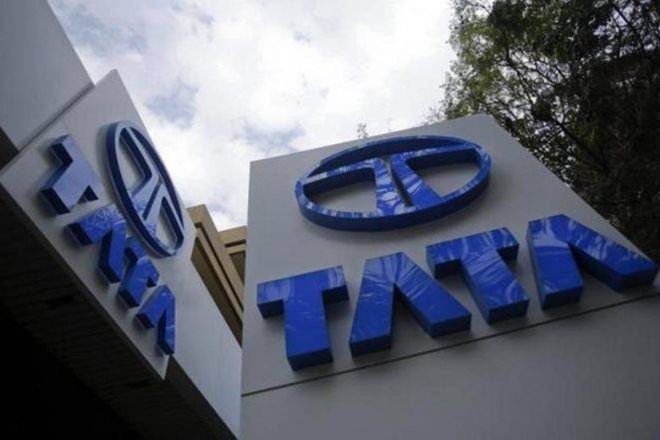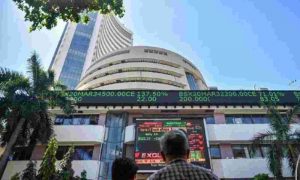Shares of Tata Motors dipped 3 per cent to Rs 960.65 on the National Stock Exchange in Tuesday’s intra-day trade amid heavy volumes
Shares of Tata Motors dipped 3 per cent to Rs 960.65 on the National Stock Exchange (NSE) in Tuesday’s intra-day trade amid heavy volumes. This comes after Tata Motors Ltd on Tuesday informed stock exchanges that TML Securities Trust has sold 1,14,97,462 new ordinary shares (NOS) on the stock exchanges for the purpose of distribution of fractional share entitlement to DVR shareholders as well as towards tax liabilities, as per the scheme of arrangement.
Read More: Western Carriers IPO Day 3: Check GMP, Subscription Status and Allotment Date
Tata Motors said it would intimate the ‘A’ ordinary shareholders individually as well as to the stock exchanges upon the distribution of cash as well as credit of NOS. Tata Motors DVR shares were suspended for trading from stock exchanges and the record date for the same was September 1.
On Tuesday, Tata Motors shares fell 2.42 per cent to Rs 964.25 level. The Tata group stock saw a turnover of Rs 3,461.09 crore on NSE and Rs 520 crore on BSE. Media reports suggested that 1.9 crore shares Tata Motors shares or 0.4 per cent of the total equity of the company changed hands in a block deal today.
In a filing to BSE, Tata Motors Ltd said: “The aforesaid intimation has been communicated to us today by Axis Trustee Services Limited, the Independent Trustee, which will now proceed to distribute sale proceeds in cash to the eligible ‘A’ Ordinary shareholders and credit the balance NOS as per entitlement to their respective demat accounts, shortly.”
As per the scheme, Tata Motors were to issue seven paid up new ordinary shares of the face value of Rs 2 each for every 10 ‘A’ ordinary shares of the face value of Rs 2 each, as consideration to the ‘A’ ordinary shareholders of the company as on the record date.
Read More: Bajaj Housing Finance Shares Surge 10% A Day After Listing; PhillipCapital Sees 27% Upside
The cancellation of the ‘A’ ordinary shares and the consequent issuance and allotment of the ordinary shares under the scheme were to be treated as deemed dividend. Tata Motors was under an obligation to deduct tax at source (TDS) on the said dividend at applicable rates in accordance with the provisions of the Act.
Tata Motors’ allotment committee, as empowered and authorised by the board of directors, earlier approved the allotment of 35.59 crore NOS of the face value of Rs 2 each fully paid-up, including fractional entitlements, to TML Securities Trust on September 1.
The TML Securities Trust, an independent and irrevocable determinate private trust, of which Axis Trustee Services Limited is an Independent Trustee, was required to sell the requisite number of new ordinary shares to discharge obligations in relation to withholding tax and taxes on sale of shares including STT & other expenses relating to the sale, and to distribute the remaining new ordinary shares to the ‘A’ ordinary shareholders.
Thus far in the month of September, Tata Motors has underperformed the market by falling 13 per cent. In comparison, the Nifty 50 has gained 0.74 per cent during the period, while the Nifty Auto has declined1.5 per cent.
Read More: Paramount Speciality Forgings IPO: Check issue size, price band, GMP and other details
Last week, international brokerage UBS had maintained its ‘sell’ rating on Tata Motors’ stock with a sum of the parts (SOTP)-based price target of Rs 825 per share. The brokerage expects further downside risk for the company from margin slippage at Jaguar Land Rover (JLR) and within Indian passenger vehicles (PVs), especially the company’s electric vehicle (EV) arm.
Consolidated sales were mixed for JLR in FY24, accounting for around 69 per cent, while India commercial vehicle and passenger vehicles (PV), accounted for around a combined sales of 30 per cent.
According to analysts at UBS, key downside risks for Tata Motors include a sharp appreciation of the British pound versus the US$/Rmb, a sharp slowdown or decline in China’s sales of JLR for regulatory or economic reasons, and an inability to refinance debt and turn around the India business.
A sharper recovery in global premium markets, JLR’s outperformance in China, strong cost controls driving a margin beat for JLR, a stronger and quicker recovery in freight demand driving higher truck sales, and the emergence of a global partner for the India PV business are key upside risks, the brokerage noted.
However, Tata Motors, in its FY24 annual report, said with promising GDP growth outlook, incentives from government to improve productivity in both manufacturing and agriculture sectors, and continuing focus on infra, demand for commercial vehicles (CVs) is expected to improve from H2FY25 (October to March).
The company’s management said they remain cautiously optimistic about domestic demand while keeping a close watch on geopolitical developments, interest rates, fuel prices and inflation.
Tata Motors will continue to deliver strong earnings before interest, taxes, depreciation and amortisation (Ebitda) performance and focus on net cash will continue, it said.
“We expect the EV industry to grow rapidly, as we continue to see an upward trend in customer demand for EVs. In FY25, we expect a substantial number of new EV launches, which will drive growth for the industry.
“Furthermore, we expect the EV ecosystem to grow comprehensively, supporting the growth in demand,” Tata Motors said.
“We expect premium luxury segment demand to be resilient despite emerging concerns on overall demand. We expect EBIT margins in FY25 to be around the FY24 level. We anticipate a modest increase in investment spend to £3.5 billion but still expect to become net-debt zero during FY25,” the company said.
DISCLAIMER:Disclaimer: The views and investment tips by experts in this News18.com report are their own and not those of the website or its management. Users are advised to check with certified experts before taking any investment decisions.





































